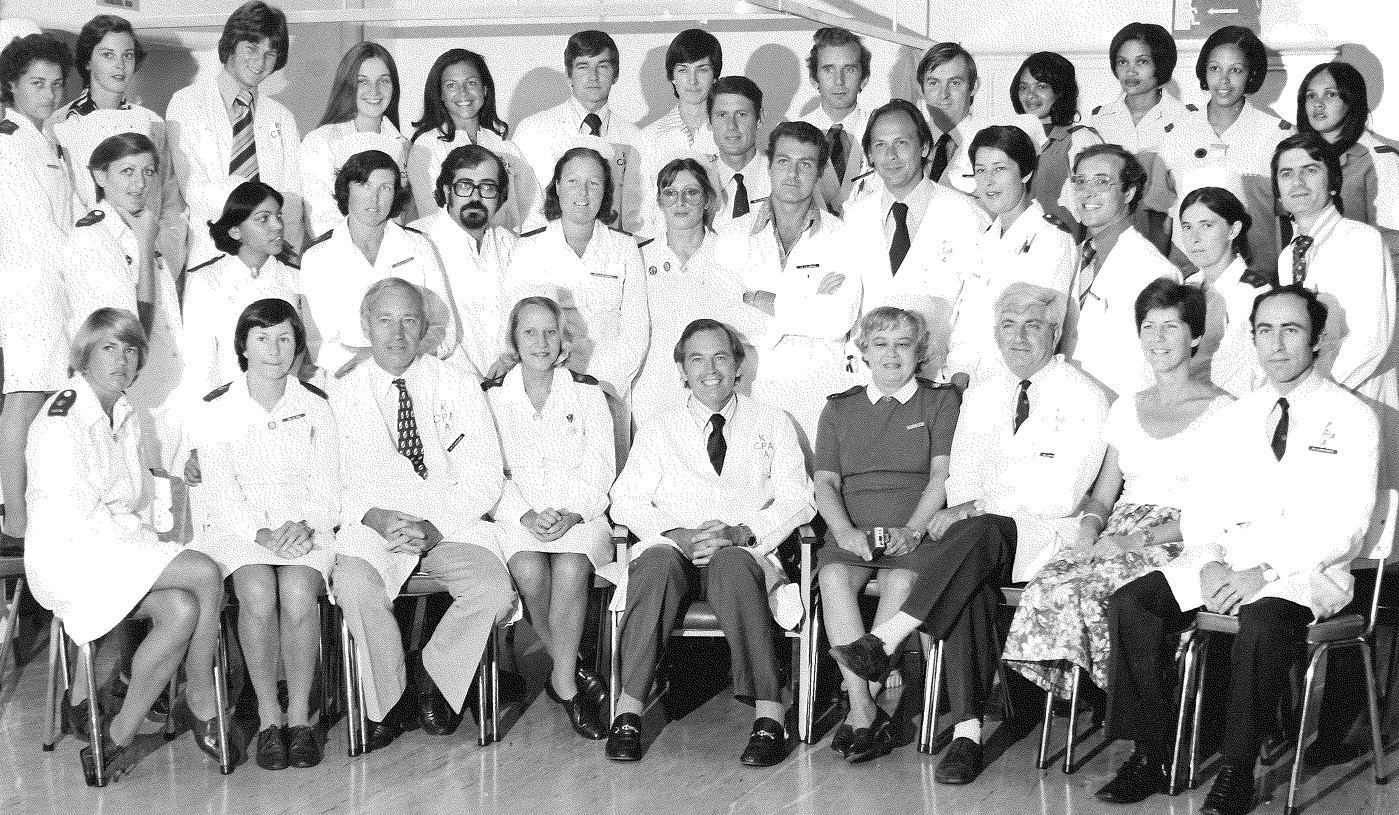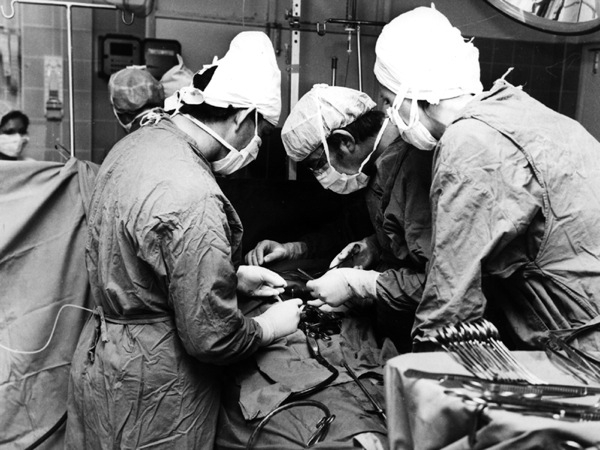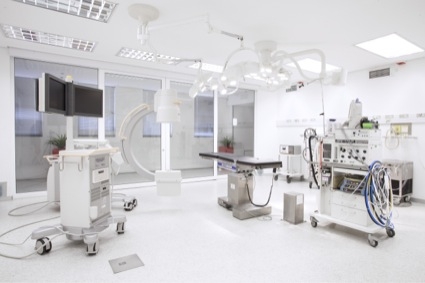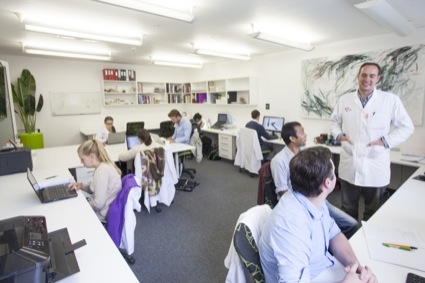
The University of Cape Town (UCT) Medical School is relatively new by Western World standards having recently celebrated its’ Centenary in 2012. It opened its’ door for the basic medical sciences in 1912. Prior to that all South African doctors were trained in Europe, either in Britain during British rule, or in Holland, when South Africa was under Dutch rule.
The initial medical students were only trained in the basic sciences and then left for Europe for their clinical training, but by the end of the decade a fully-fledged medical school had been established and the first doctors graduated in the 1920’s. The initial teaching hospital was at Somerset Hospital, near today’s Waterfront area of Central Cape Town and the medical school was in the Hiddingh Hall Campus of UCT in the Gardens suburb of central Cape Town. In 1938 Groote Schuur Hospital (GSH) was opened as the main teaching hospital and the medical school moved to its’ present site in the Observatory/Mowbray area where both still function today.
Until the end of the 1940’s, thoracic surgery was not a separate discipline in South Africa, and thoracic surgery procedures were undertaken by the general surgeons. In the late 1940’s thoracic surgery was established as a formal sub-discipline within general surgery and the first Thoracic Surgeon at Groote Schuur Hospital was recruited from Britain. During the 1950’s two South Africans, who had been trained as general surgeons, left to train abroad: Dr Rodney Hewitson trained in Britain and was drawn to thoracic surgery and also the beginnings of open heart surgery in Britain and Dr Christiaan Barnard went to undertake laboratory based research in the leading surgical laboratory under Dr Owen Wangensteen in Minneapolis, Minnesota. It so happened that Minneapolis was the birth place of open heart surgery and during Barnards’ three years there, he spent as much of his time learning about the growing new specialty of cardiac surgery. By 1958 he had completed his academic research and been awarded two degrees by the University of Minnesota and returned home. At his departure he was given the gift of a Gibbons Heart/Lung machine donated to the University of Cape Town by the American Government. After the return of Dr. Barnard with the new heart/lung machine, the first successful series of open heart surgery procedures at Groote Schuur and Red Cross Children’s Hospitals were commenced in 1958.

The cardiac program grew rapidly, and in 1962 Christiaan Barnard was appointed as Head of a new Department of Thoracic surgery (incorporating cardiac surgery) and he soon thereafter established both Groote Schuur and Red Cross Children’s hospitals as leading cardiac centres. As Dr Rodney Hewitson also returned from his training in thoracic and cardiac surgery from Britain – together with the strong support services of other flourishing Departments at the University of Cape Town – the cardiac surgery program grew steadily. The other, later famous, South African surgeon to join the team was Dr Bob Frater, who had done post-graduate training in cardiac surgery at the Mayo Clinic and he joined the program at UCT/GSH from January 1962 to April 1964 before returning to the USA where he established a very successful, and pioneering, open heart surgery program in New York where he became renowned for his work on mitral valve repairs. During this period, however, it also became evident that the sub-speciality of thoracic surgery was suffering and was being relegated to a “Cinderella” discipline and as such the decision was made to separate the discipline of thoracic surgery from cardiac surgery and Rodney Hewitson was appointed Head of Thoracic Surgery and Chris Barnard was appointed Head of Cardiac Surgery.
During the early 1960’s, the unit in Cape Town made significant contributions to open heart surgery with advances made in various aspects of congenital heart disease such as surgery for Tetralogy of Fallot, Ventricular Septal Defects and Ebstein's anomalies as well as in the surgical management of valvular disease with the design of two mechanical valvular prosthesis - the UCT Aortic and Mitral mechanical prostheses. During the mid and latter half of the 1960 Chris Barnard was increasingly drawn to the concept of heart transplantation for the many patients with end-stage cardiac diseases that were not at that stage amenable to any surgical cure. His interests culminated in the first human to human heart transplant done at Groote Schuur Hospital and the University of Cape Town in December 1967.

As the initial heart transplants internationally had relatively poor outcomes the enthusiasm for heart transplantation waned and by 1970 no transplants were performed at Groote Schuur Hospital. However, with the increasing success in liver and kidney transplantation the interest in heart transplantation started growing again in the early 1970’s, and ongoing pioneering efforts were continued by 4 units internationally – two in the USA (Norman Shumway’s at Stanford University, California; Richard Lower’s at the University of Richmond, Virginia), one in Paris (Christian Cabrol’s) and Chris Barnard’s at UCT / GSH. In 1974, following extensive laboratory and animal research, the first heterotropic heart transplant was performed at Groote Schuur Hospital which also gained worldwide professional and lay media attention – the latter as the so-called “piggy-back heart”.
Prof Barnard eventually retired a few years prematurely in 1983 to pursue his many other interests and towards the end of 1984, Prof Bruno Reichart from Munich, Germany was appointed as head of the newly re-established Cardiothoracic Surgery Department. He actively pursued research work in the animal laboratory and drove a strong and active clinical cardiothoracic surgery service. He also started an active cardiothoracic training program, something which had been neglected in the Barnard era as many of the trainee surgeons in the unit were itinerant surgeons, coming here for a year or two and then leaving without obtaining formal qualifications in Cardiothoracic Surgery.
At the end of 1989, Professor Bruno Reichart resigned from his post at the University of Cape Town to take on the appointment as Head of Department at the prestigious Grosshadern Clinic at the University of Munich. After his resignation, Professor John Odell, a South African cardiothoracic surgeon from Durban was appointed to the Chris Barnard Chair. During his 3 years as Head of Department reallocation of tertiary medicine had begun to result in serious budget cuts due to an ideological shift towards primary health care – in accordance with the declaration of Alma Ata in the Sowjet Union. Professor Odell tried very hard to get the Health Authorities to commit more resources and funding towards Cardiothoracic Surgery but unfortunately failed. He eventually resigned to take up a position at the Mayo Clinic and subsequently became head the Cardiothoracic Department at the satellite Jacksonville campus in Florida, USA.
During Professor John Odell’s tenure he recruited Dr Peter Zilla from overseas, who had previously spent time as a Registrar in the Department in the late 1980’s during which time he and a colleague had set-up an active research laboratory unit in the Department. He joined the Department as a senior specialist in 1992 after he had written all the exams and met all the criteria for registering as a Specialist Cardiothoracic Surgeon in South Africa. Subsequent to Prof Odell’s retirement, at the end of 1992, Dr Peter Zilla and Professor Ulrich von Oppell were both short-listed for the chief post and Professor von Oppell was appointed as Chris Barnard Chair of Cardiothoracic Surgery in 1993. Shortly after 1993 and during the remainder of the decade of the 1990’s, the full effect of the explosive burden of disease caused by HIV & AIDS and associated medical conditions such as Tuberculosis started taking an additional toll on the health-care budget of tertiary institutions in South Africa. The Department lost more than half of its ward beds, more than half our the ICU beds and about 60% of adult cardiac surgery operating lists at GSH. The severe curtailment in services was devastating to the Department at that time and resulted in a very demoralising period for all. Similar cuts were not imposed at Red Cross Children’s hospital because the right of children to good health-care at all levels is enshrined in the South African constitution and politicians and senior administrators avoided public repercussions. To aggravate circumstances, there was also an attempt by the Administration to cut back on the number of heart transplants performed. In the mid 1990’s we still had an active heart transplant program performing more than 30 heart transplants a year but by then the Private Sector had also become involved in heart transplantation and Private Heart Transplant Units were set up not only in Johannesburg, but also in Cape Town in a Private Hospital which took over the predominant source of privately funded heart transplant patients from the public sector. By the late 1990’s and 2000 the number of transplants performed in our Unit had fallen to less than 10 a year despite our best efforts to keep heart transplantation alive. In addition, the administration imposed a prosthetic valve maximum “quota” on our Department which was eventually lifted after our Department applied a lot of pressure and convincing evidence on the government. To make things worse, in 2001, the Provincial Health Department attempted to assume direct control of services at RXH and remove the control of services there from the academic Head of Cardiothoracic Surgery (and for other specialities such as Anaesthesia, Neurosurgery, Orthopaedics etc). This was an attempt by the Provincial Health Department to weaken the base of the heads of Department as a “Divide and Rule” strategy. Our Department was the most vocal and aggressive discipline in countering this move and was eventually successful in preventing this “take-over” bid and the status quo still remains today. The staff and services at Red Cross Children’s hospital are still under the overall control of the Academic Heads of Departments and our Cardiothoracic Surgeons are still operating at both facilities.

As early as in 1999, Professor Peter Zilla and three colleagues from Pathology, Respiratory Medicine and Microbiology had already decided that the only way forward would be to establish a second platform for clinical services through a Private University-based Hospital. This would also provide an additional source of patients to maintain the clinical skills of the consultants in the Department and to allow access to modern and up-to date equipment, as the ailing public health-care system could not afford to maintain or purchase modern equipment during the later 1990’s. A third reason was to aid in the retention of doctors in University hospitals with an additional source of income, as state salaries for doctors had not kept pace with the significantly higher remuneration in the private health-care sector. Professor Zilla made contact with the very successful German hospital group, Rhön Klinikum AG, and they formed a partnership with UCT to establish the UCT Medical Clinic within the Groote Schuur Hospital premises. This was one of the notable successes driven by our Department during this demoralising period in the late 1990’s.
In 1998 after Professor von Oppell’s return from a sabbatical at one of the Rhön Klinikum Hospitals in Leipzig, he found it difficult to cope with the demoralising effects of the severe cuts in the funding of our Department and eventually resigned in 2000 to take up an academic position at the University of Cardiff in Wales, UK. Shortly thereafter, Professor Peter Zilla and Dr Johan Brink were shortlisted for the Chris Barnard Chair of Cardiothoracic Surgery and Professor Peter Zilla was successfully awarded the position in late 2000. He soon thereafter appointed Dr Johan Brink as Director of Clinical Services in the Department and Dr Paul Human as Director of Research in the Department under his overall leadership.
From the early 2000 onwards Professor Zilla and his team continued to be faced with the ongoing resource constraints in the Public Sector. As a last resort, the confrontation was carried to the media, which actively endorsed the plight of the Department.
At that time the Division had reached its lowest point since its establishment in the mid 1960s. To make things worse, the newly established UCT Medical Centre was threatened by the eventual abandonment of the hospital by Rhön Klinikum as it failed to establish a risk-sharing, global-fee concept which it had so successfully set up in Germany. The American type fee-for-service system was already too well-established within the South African Private Health Care market. Threatened with its closure, Prof. Brink’s efforts to find a new owner came to fruition and eventually Netcare, the largest South African Private Hospital Group, took it over in co-ownership with the University and the renamed “UCT Private Academic Hospital’ (UCTPAH) is now on a financially sound footing. The Chris Barnard Department of Cardiothoracic Surgery is proud of the fact that it initiated and helped to establish this very important Health Care Facility as an asset to the University of Cape Town Medical Faculty. Unfortunately, due to lack of Cardiology support during the initial years and the absence of a Casualty at UCT Private academic hospital, however, cardiac services have been disappointingly poor at UCT PAH, but the opportunity was recently seized for expansion – particularly for “niche’ procedures such as mitral and aortic valve repair, minimally invasive valve procedures, trans-catheter cardiac procedures, HOCM resections, pulmonary endarterectomies, thoracic aortic procedures and transplantation, all of which present members of our Division have often exclusive expertise in.
In addition to the important role in the establishment of the University of Cape Town Private Academic Hospital, Profs Zilla and Brink also drove an initiative to establish a Clinical Wing of the Cape Heart Centre in a space opposite the new Groote Schuur Hospital. A bid for the land was successfully obtained and venture capitalists and health-care funders were on board to establish a Private-Public Cape Heart Centre within the precincts of the University of Cape Town Health Science Faculty. Architectural plans were drawn up by one of the leading architects in Cape Town, Stefan Antoni & Associates and various financial models in a private-public partnership were investigated. Unfortunately, after having secured the land and the enthusiasm of key players, this venture did not materialise because of the government’s failure to see the vision of the a combined Private-Public heart centre. However, this initiative nevertheless demonstrated the strong leadership and vision of our Department to improve Cardiology and Cardiothoracic Surgery at the University of Cape Town.

Following Professor Chris Barnard’s sudden death in September 2001, the Department immediately took the initiative of renaming the SAMIOT building at the Medical School which housed the Cardiovascular Research Unit and other cardiac related research laboratories and was built in the early 1970’s to strengthen cardiac research by Professor Barnard and others, as The Chris Barnard Building. We subsequently secured the Dean’s support for re-locating non-cardiac departments which had occupied it over the years to other premises and move all key cardiovascular research facilities into the building under the umbrella of “The Cape Heart Centre” whose director Professor Zilla was for more than a decade.
To counter the point of low morale at that time, we also undertook a major fund-raising drive to upgrade the by now deteriorating ward and office infrastructure in the Cardiothoracic wards, ICU and office area and succeeded in 2003 when the wards and office area was upgraded to an impressive first world environment followed in 2006 by a total renovation and upgrade of the Transplant outpatient facilities and the ICU.
To improve the notoriously difficult follow-up of our indigent patients the Department’s research director Dr. Paul Human has established a modern database and management system using Filemaker software. The first patients were entered into this database in January 2003 and we are now in the 12th year of this comprehensive follow-up and quality-control tool. It incorporated the facility for semi-automated operation reports, discharge summaries and other reports at the touch of a button and also allows easy to withdraw morbidity and mortality (M&M) statistics which are now regularly reviewed at our monthly M&M meetings with our Cardiology colleagues. These regular important monthly meetings were another step introduced about ten years ago by our Department which is now a standard requirement for ongoing quality assurance and improvement in patient care.
Regarding the training of Registrars (Residents) since 2000, it became evident that we were training too many Cardiothoracic Surgeons for the realistic ability of the Private and Public Sectors to absorb the graduates and the decision was made to appoint a few foreign fellow African supernumerary Registrars who would return to their countries of origin to set up very badly needed Cardiac Surgery Centres in Africa. From 2004 to 2009 four Nigerian surgeons were trained in our Department. Two of them have recently been able to establish a Cardiothoracic Surgery Unit at the University of Ilorin and we planned lead a team under Prof. Brink to start open heart surgery there in August 2014. This visit was cancelled at the last minute due to the Ebola Virus outbreak in West Africa but the visit has been re-scheduled for January 2015.

In 2008 our Department was approached by the Namibian minister of health to assist with the establishment of an Open Heart Surgery Facility in Windhoek. Open-heart surgery was commenced there in 2008 by visiting teams from our Department and continued by a senior colleague trained by us. Subsequent to that we trained Namibian staff in our Cardiothoracic facilities at Groote Schuur and Red Cross Children’s Hospitals – this included doctors, nurses and technologists and we are still involved in the training of various cardiac Specialists for Namibia. We expect to graduate an additional Cardiothoracic Surgeon for Windhoek within the next year. Groote Schuur and Red Cross Children’s’ Hospitals are in the process of training an Adult and Paediatric Cardiologist respectively, after two Namibian Anaesthetists have already been trained in Cardiac Anaesthesia.
Members of our Department still visit Windhoek regularly to assist with the program there which by now is a well established, self sustaining Cardiac Surgery Centre with almost 200 open heart cases performed annually.
The next Cardiac Surgery initiative in Africa supported by our Division is that in Zambia. Over the last 5 years we have trained a surgeon who in May 2014 has passed his South African College of Cardiothoracic Surgery exams and is ready to commence cardiac surgery in Lusaka. We have recently done a site visit at the University Teaching Hospital in Lusaka. There was a feeling of optimism that the required government support will be forthcoming in the foreseeable future to be able to commence a sustainable program emulating what has been achieved in Namibia.
With regards to research in the Department over the last 14 years, Professor Zilla has continued to drive a world class Cardiovascular Research Unit. During the 1990’s and early 2000’s the major support for the cardiovascular research came from industry funding by the biggest medical device company, Medtronic, to the extent of 60 mio Rand. This 20 year collaboration was initially started in Europe by Prof. Zilla and carried over to UCT in 1992. When this funding eventually faded out grant-funding has been stepped up (The Medical Research Council of South Africa, The NIH in USA, NRF etc). Over the last few years Professor Zilla has also been very successful in starting a University spin-off company called Strait Access Technologies which so far received 673 mio Rand in funding from both the Ministry of Trade and Industry and the private economy. It is pioneering the development of affordable catheter based valvular interventions which will be applicable to the 3rd world population in South Africa, providing a platform for post graduate students.

With a newly found positive spirit between our Department and the government and hospital management, post have been filled, transplantation has begun to pick up again and the commencement of the complete revamping of cardiothoracic operating theatres with the establishment of a hybrid theatre for trans-catheter therapies, we could move towards closing the gap between first world cardiac surgery and our situation. Part of this new era sending two of our surgeons overseas for a year to highly repudiated centres. One (Dr. Andre Brooks) spent this time in Birmingham, UK in paediatric cardiac surgery under Dr Bill Brawn and at the Paediatric Cardiology and Cardiac Surgery Department in Paris under Prof Pascal Vouhe and Professor Daniel Sidi. This has been an important link and ongoing collaboration between the Parisian unit and our unit has been established with great benefits to our Department. An other team member (Dr. Jacques Scherman) was sent to the University of Zürich with a focus on learning trans-catheter technologies for valvular interventions and also minimal cardiac access surgery. With a lot of difficulty, bearing in mind the large costs of these transcatheter technologies at present, Dr Scherman and other members of our Department established a successful TAVI (Transcatheter Aortic Valve Implantation) program at Groote Schuur Hospital upon his return. An active minimally invasive mitral repair/replacement program has also been established and the first 50 cases will be presented at the South African Heart Association Congress in October 2014. Dr Scherman will be spending a further 6 months in Zurich in early 2015 brushing up on the catheter skills and getting up to date training in trans-catheter mitral valve interventions.
By the end of 2015 we hope that our Hybrid operating theatre will be fully equipped and ready to offer both Private and Public Sector patient’s access to the most modern technology available internationally.